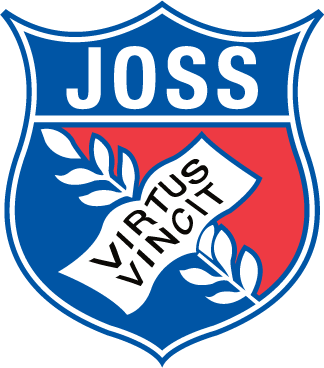School History

by Rob Howatson – J.O. Class of 1984
For an in-depth look at the school’s history, download Ken MacLeod’s The Story of South Vancouver and John Oliver High School from the VSB Archives & Heritagewebsite.
To learn about current heritage projects at the school check out the J.O. Legacy Society.
John Oliver Secondary School began in 1912 when a teacher named John ‘Jake’ Palmer was asked to start a high school in South Vancouver. At that time, South Van was its own municipality, separate from the rest of the city. The area was largely rural, mainly working class, and while it had some nice, new elementary schools, there were no facilities for older students.
Palmer began South Van High in two spare rooms at what is today Lord Selkirk Elementary (22nd and Welwyn). When enrollment grew, he re-located his students to a building at 49th and Knight. The new structure was designed to be a grade school and it later became Sir Sanford Fleming Elementary, but in the six years that Palmer was there, it was a high school with low sinks. The principal and students were relieved when the school board opened a purpose-built South Vancouver High School near Fraser Street in 1921. The 16-classroom building was adjacent to 43rd Avenue, where J.O.’s main playing field is today. The school was a stone’s throw from the municipality’s administrative hub. A city hall, police department and fire hall were clustered near 41st and Fraser, where the school’s smaller training pitch sits today.
Palmer’s only complaint was the provincial government’s insistence that the school be named after B.C.’s sitting premier, John Oliver. The principal refused to acknowledge the new moniker that was displayed above the building’s main entrance and J.O. students continued to don their old SVHS jerseys well into the 1930s. The structure was the heart of the campus until it was destroyed by fire in 1959.
In 1929, South Van amalgamated with the rest of the city, and as the farms and brush land gave way to more houses, shops and sawmills, the J.O. campus expanded to keep pace with climbing enrollment. The Barn, also known as the eight-room Matric Building or Unit II, had already been built in 1926. A gymnasium, which came to be known as the Girls’ Gym, was erected in 1940 and mercifully replaced the drafty, cramped Horticultural Hall on Fraser Street near 43rd, which had been commandeered for P.E. classes. The Girls’ Gym was later renamed in honour of J.O.’s three longest serving female PE teachers: Mary Campbell, Mary Macdonald and Pat Spencer. Its walls could scarcely contain the school cheer that was sung at sporting events.
Come on Jayo, we’re rooting for you; We’re for the good old red and the blue…
Frank Perrett wrote the song lyrics as a trumpet-playing student at the school in 1937. He later joined the Seaforth Highlanders and was killed by a sniper’s bullet in the Netherlands in 1945. The young Lieutenant was one of 106 J.O. alumni who lost their lives while fighting for Canada during WW II.
After the war, the baby boom swelled the school’s numbers, making it the nation’s largest high school. J.O. got a double gym in 1950 as part of a new, L-shaped, three-storey concrete structure that stretched its longer leg of classrooms along 41st. The big gym, known as the Boys’ Gym, was renamed the Hugh Marshall Gymnasium in honour of one of the school’s most supportive grads who also taught P.E. at the school from 1954 to 1987. A 940-seat auditorium arrived in 1954 as part of yet another growth spurt that also saw the addition of more classrooms and a new cafeteria. The auditorium was often used by music teacher Teo Repel to showcase his award-winning choirs from 1957 to 1980 and drama teacher Tibor Kalmar to stage his elaborate musicals from 1980 to 1992.
A technical education wing opened in 1965 and a greatly expanded library in 1970, giving the school its present-day footprint.
And speaking of feet, imagine the thousands of students who travelled J.O.’s hallways over the years. Graduates include UBC president Walter Gage (class of 1921), billionaire Jimmy Pattison (1947) and singer Mozdah ‘The Oprah of Afghanistan’ Jamalzadah (2001). The school has hosted every wave of immigration to arrive in South Van, including British (1910s-1940s), German (1950s), Chinese (1960s), Indian (1970s-1980s) and Filipino (1990s-2000s).
Today J.O. is one of the most culturally and ethnically diverse schools in the city, with over two-thirds of the students fluent in at least one language other than English.
The school is home to 1100 students, grades 8 through 12 and boasts a broad spectrum of curricular offerings.

